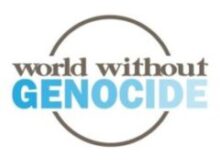Antisemitism is surging. Here’s a primer.
The oldest hate isn’t likely to go away any time soon. I have no solution so long as people can be incited to lash out against those they don’t understand.
By Ellen J. Kennedy August 18, 2022
I’m a Jew. I live in Edina, a Minneapolis suburb with very few Jews. I moved to Edina 30 years ago so my children could attend the highly rated public schools. I made the decision with some hesitation, however. It wasn’t all that long ago that Jews weren’t part of the community. Restrictive covenants until the 1960s barred Jews and Blacks from buying homes.
We made the move and I hoped to find a welcoming neighborhood.
On the first day in our new home, Sarah, a child a few doors away, invited my daughter over to play. My little girl, age 8, returned in tears. She had asked Sarah if she, too, was Jewish. Sarah had replied, “No, and you’ll go to hell because Jews don’t believe in Jesus.”
And there it was — the oldest hate.
When I was in first grade, a boy in my class asked me, “What is your nationality?” I replied, “I’m an American.” He said, “No, your nationality. You’re a Jew, aren’t you?”
The lyrics from the classic Broadway musical “South Pacific” are prophetic:
“You’ve got to be taught to hate and fear,
You’ve got to be taught from year to year,
It’s got to be drummed in your dear little ear,
You’ve got to be carefully taught –
To hate all the people your relatives hate,
Before you are six, or seven, or eight,
It’s got to be drummed in your dear little ear,
You’ve got to be carefully taught.”
Antisemitism was somewhat dormant after World War II. Holocaust survivors were sharing their horrific testimonies and it became “culturally, politically, and intellectually unacceptable” to make hate-filled statements in public, as Jeffrey Goldberg, editor of The Atlantic, writes.
But denialism now spreads wildly on social media; survivors’ voices are fading to silence and the lid came off the steaming pot of hate in 2017 at Charlottesville’s far-right rally. The Hitler-style salutes and chants of “Jews will not replace us!” were shocking, and the Jan. 6 insurrection pushed us over the top with Confederate flags, swastikas and hoodies bearing pro-Auschwitz slogans.
Antisemitism has been surging across small towns and big cities alike, including in Edina. According to Statista, there were 2,717 antisemitic incidents recorded in the U.S. in 2021. Those are only the recorded ones; many go unreported because victims fear additional harassment or believe that reporting is futile.
My parents lived through World War II from the safety of the United States, although extended family in Europe perished in the Holocaust. I am thankful my parents are not alive to see this explosion of antisemitism in the U.S. and throughout much of the world, including in Lithuania, where their relatives died. Was that war fought for nothing, after all?
Antisemitism is called “the oldest hate” because it has ravaged Jews’ lives for more than 2,000 years.
Jews have been expelled from countries in Europe, the Middle East and Africa. According to the Anti-Defamation League (ADL), hate-mongers use the phrase “109/110,” referring to the false claim that Jews have been expelled from 109 countries and urging the U.S. to become the 110th.
Jews have been tortured and massacred during the Crusades, the Inquisition, Russian pogroms and the Holocaust.
Jews have been blamed for diseases and plagues. The New York Times reports that in medieval Europe, Jews were blamed so often for the Black Death that during its peak, from 1348 to 1351, more than 200 Jewish communities were completely wiped out, the inhabitants accused of spreading contagion. And today antisemites label COVID-19 “the Jew flu.”
The hate against Jews suggests that we are a global threat because of our huge numbers. This is an illusion: Jews are 0.2% of the world’s population, a speck among the billions of people on the planet.
But hate doesn’t go away when confronted by reason. Medical researchers document the phenomenon of hate: feelings of intense hostility and aversion deriving from fear, anger or a sense of injury. Hatred changes the brain’s chemistry, provoking aggression and the urge to attack.
It is not only lone individuals who hate. There are at least 733 active hate groups in the U.S., according to the Southern Poverty Law Center. What motivates this?
One reason people hate is because they fear those who seem different — because of race, religion, ethnicity, national origin, sexual orientation, gender identity, or other characteristics. This fear makes them feel threatened. Psychologists explain it with ingroup-outgroup theory: We turn toward our own group with positive feelings and push aggressively away from others because they’re a threat.
Today Jews are not the only despised outgroup. Muslims, people of color and transgender people are targeted as well. Yet many of the perpetrators have never met a Jew or a Muslim or a Black person or a transgender person — and thus comes the fear of the unknown.
As a target of antisemitic hatred, I am frightened. I know that I am hated not for me, but for the category I belong to: Jew. I am stripped of my humanness and reduced to an abstract toxic label, and it is easy to attack a nonhuman.
The oldest hate isn’t likely to go away any time soon. On the contrary, it is growing. I have no solution so long as people can be incited to lash out against those they don’t understand.
Ellen J. Kennedy, Ph.D., is the executive director of World Without Genocide at Mitchell Hamline School of Law, an adjunct professor of law and the representative of World Without Genocide to the U.N. Department of Global Communications.



